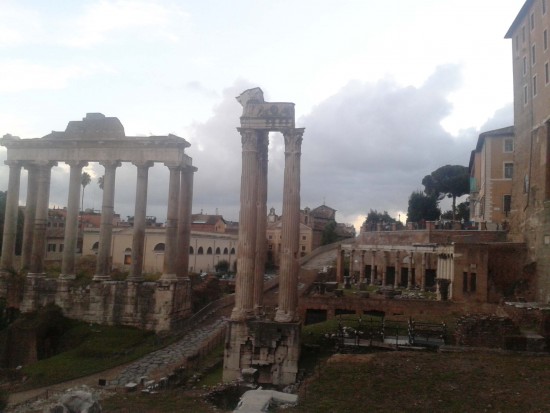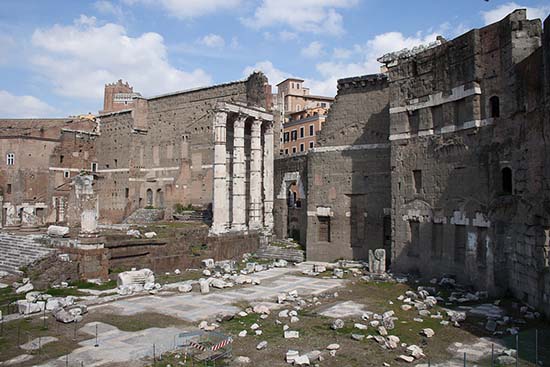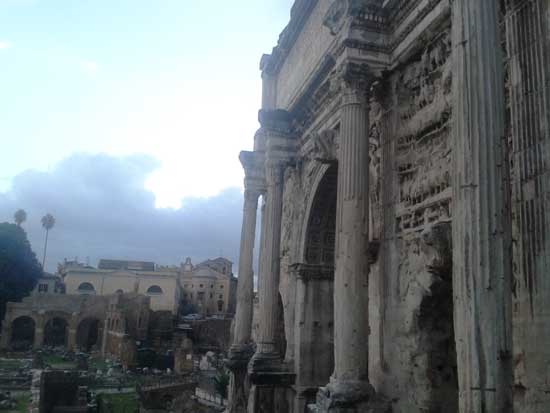You are right in the middle of the city centre and while walking you are suddenly attracted by a series of ruins, fascinating in their antiquity, full of history and culture, which make the urban area in which they rise absolutely astonishing: you are close to the Imperial Fora. Whether by day or night, when the Via dei Fori Imperiali is fully illuminated, it is difficult to resist the lure of a walk, in an area that can be reached with metro line A, at the Coliseum station.

Credits: sognirossi
This is the most important archaeological testimony of ancient Rome, which gives us an interesting picture of what Rome’s cultural life at the time of its founders. The complex consists of a number of construction areas, dating back to the various emperors who succeeded each other over time, each with its dedicated forum or square. Each emperor brought changes to the urban area, which today appears rather stratified and extremely rich in archaeological remains.
The word “Forum” generally refers to a central urban area that corresponds to today’s square, where the main buildings of the city stood and where the most important social activities usually took place, such as the political and cultural ones.
Initially, during the second century and more precisely in 107 AD, mainly thanks to the efforts of emperor Trajan, a unique period of construction began at the Fora. It was Apollodorus of Damascus who designed this area of the Fora. Particularly fascinating is the site of the market, with the still recognizable remains of the tabernae, which grow mainly along the so called via Biberatica. In the Forum were found the Greek and Roman libraries, the temple of Trajan and the Basilica Ulpia, of which remain traces of the paving of coloured marble. Remember that the basilica was once a civil and not a religious building, while the main material used was clay brick.

The Forum of Augustus was inaugurated in 2 BC and its most important building was probably the Temple of Mars Ultor, where the main political assemblies took place, especially those related to war issues, as suggested by the adjective “Ultor” which means “avenger, belligerent”. The Hall of the Colossus is, instead, an area with artwork, where remains of statues that were once probably of great dimensions were discovered; this is an area that housed the statues of the main personalities of the political and military life of the Roman Republic and of its ancestors.
A smaller Forum in its extension, but equally appealing, is the forum of Nerva, at first linked to the name of Domitian. Known also as the “Transitory Forum”, it was the second last forum to be built before that of Trajan. Here stood the Temple of Minerva, a deity particularly worshiped by Domitian. Due to the presence of several older complexes, built at the behest of the other emperors, the building area available to Nerva was certainly very limited; you’ll find however the very famous so called “Colonnacce” columns remain with their own decorated entablature and attic (complex of horizontal beams located at the top of the columns).
The oldest forum of this rather complex and stratified area is the Forum of Caesar. Its construction dates back to 54 BC and coincides with a time in history when the oldest Roman Forum was no longer able to fulfil its functions. The Forum of Caesar therefore integrates the previous area. Remember that inside the forum the main activities of public life took place.
To the southeast this area closes with the so-called Forum of Peace, linked to the Emperor Vespasian and built in 71 BC. Its original task was to treasure the spoils of war from the Jewish campaigns. Here there was a temple with an apse, which probably accommodated the statue of the emperor and a library.

Credits: sognirossi.


